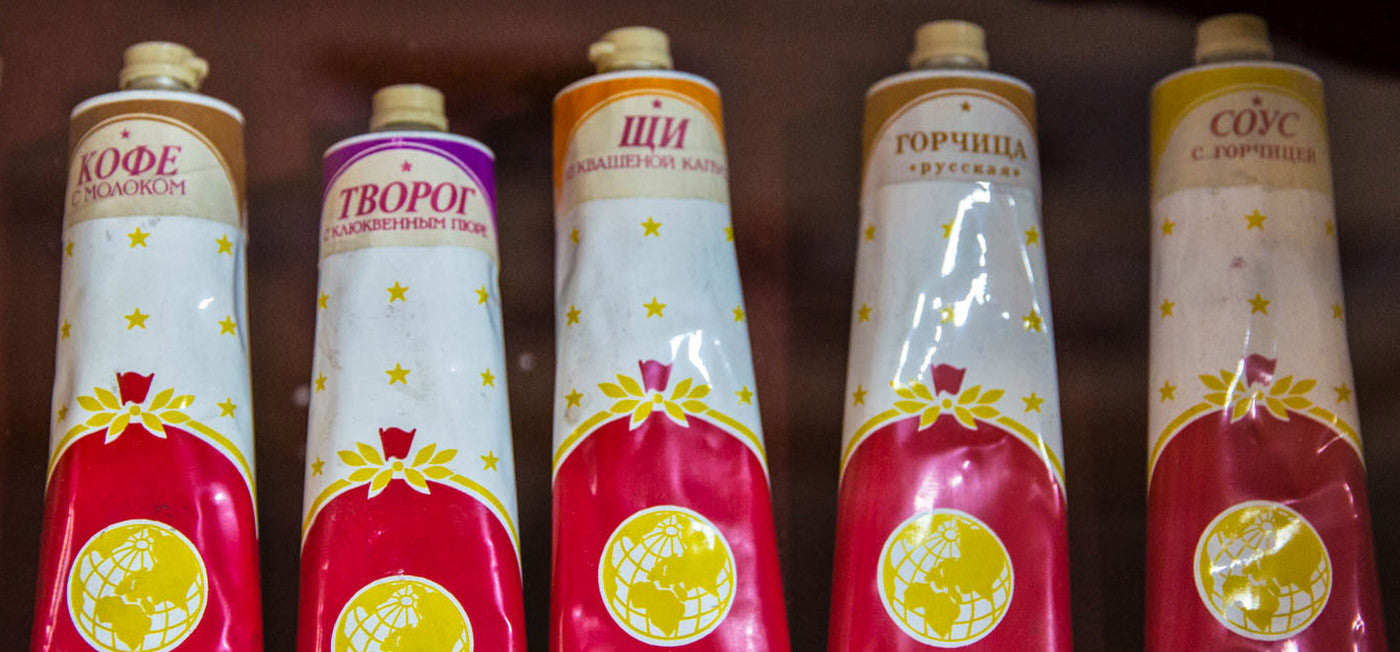
One Giant Leap for Mankind
The evolution of space food, from tubed food to de-hi, by Sam Selby
On April 12th 1961, Yuri Gagarin of the Russian Space Program became the first human in space. His journey lasted 108 minutes, setting off from the Baikonur Cosmodrome in Kazakhstan and landing near Engels in Russia. During the flight Gagarin also became the first man to eat food in space, consuming three 160g tubes of food — two containing beef and liver paste, one containing chocolate sauce. Up until Gagarin’s flight, it was widely believed that eating in low gravity would be impossible. The Russian astronaut proved this theory wrong.
When NASA first began sending people into space, they briefly experimented with Russian-style tubed space meals. But it was a short-lived culinary affair. For American astronauts, dehydrated food won out. NASA’s first batches were small, dry cubes in a variety of flavours: cheese, bacon and egg, peanut butter and, most strangely, “red”.


Pictured left to right: 1960s Russian space paraphernalia; Tinned space food from Kyakhta Museum, Siberia
However, not all NASA’s astronauts were impressed. On April 21st 1965, just under two hours into Gemini III’s four hour and 52 minute flight, John Young — one of two astronauts on board the shuttle — took out a corned beef and rye sandwich bought from a local delicatessen, Wolfies, on the morning of the launch. He took two bites and returned the sandwich to his pocket. The ground crew were livid; there was a risk that crumbs from the sandwich might have damaged the spaceship’s electrics. When the astronauts returned to Earth, the House of Representatives’ Appropriations Committee held a meeting to discuss this sandwich scandal. The story made the front page of the 'Washington Post'.
Eating in space took a big leap forward in 1973, when NASA’s first space station, Skylab, was launched into orbit. The station had a dedicated dining table, where all three astronauts could “sit” down and eat their rations together — a distinct change from the cramped eating conditions aboard previous shuttles. Sitting in zero gravity is all but impossible, so engineers locked footholds, like stirrups, onto the floor which allowed the astronauts to stay in their chairs as they ate. The Skylab was also the first spacecraft to carry a freezer and frozen food on board, although the weight of the freezer unit and the energy it required limited the food which could be taken to roughly 15 percent of the astronauts’ total diet.
In 2006, NASA scientists worked with celebrity chef Emeril Lagasse to create some mood-boosting space food for astronauts on a six-month stopover in the International Space Station. The New Orleans-based chef put together five cajun-influenced dishes including jambalaya — a traditional one-pot dish with rice, chicken, chorizo and vegetables — and mashed potato with bacon. The three astronauts were grateful for the added flavour; a reduced capacity for taste brought on by zero gravity had led them to crave food with a bit of a kick.


